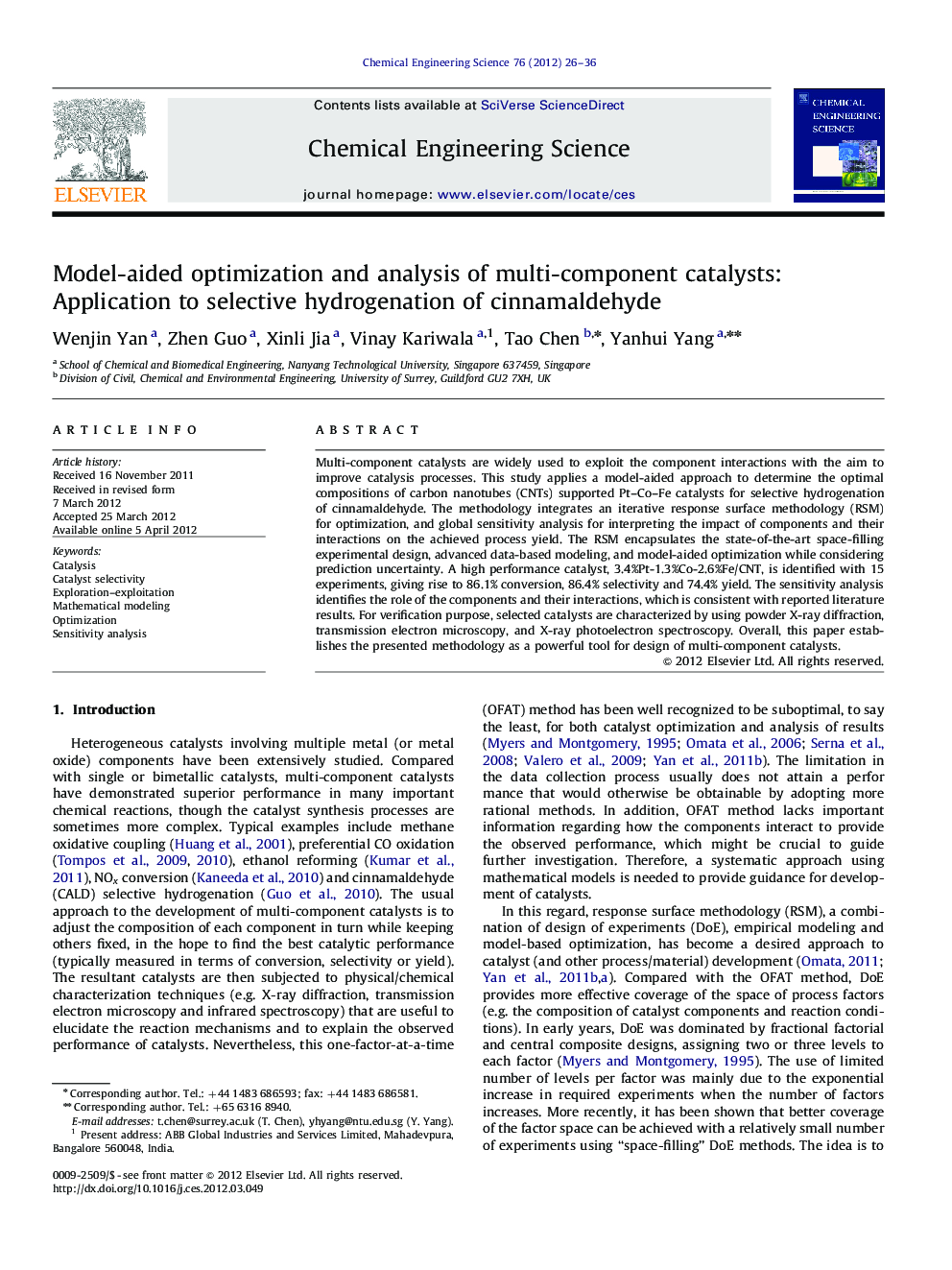| Article ID | Journal | Published Year | Pages | File Type |
|---|---|---|---|---|
| 155790 | Chemical Engineering Science | 2012 | 11 Pages |
Multi-component catalysts are widely used to exploit the component interactions with the aim to improve catalysis processes. This study applies a model-aided approach to determine the optimal compositions of carbon nanotubes (CNTs) supported Pt–Co–Fe catalysts for selective hydrogenation of cinnamaldehyde. The methodology integrates an iterative response surface methodology (RSM) for optimization, and global sensitivity analysis for interpreting the impact of components and their interactions on the achieved process yield. The RSM encapsulates the state-of-the-art space-filling experimental design, advanced data-based modeling, and model-aided optimization while considering prediction uncertainty. A high performance catalyst, 3.4%Pt-1.3%Co-2.6%Fe/CNT, is identified with 15 experiments, giving rise to 86.1% conversion, 86.4% selectivity and 74.4% yield. The sensitivity analysis identifies the role of the components and their interactions, which is consistent with reported literature results. For verification purpose, selected catalysts are characterized by using powder X-ray diffraction, transmission electron microscopy, and X-ray photoelectron spectroscopy. Overall, this paper establishes the presented methodology as a powerful tool for design of multi-component catalysts.
► Model-aided optimization of multi-component catalysts. ► Global sensitivity analysis to identify the role of catalyst components and interactions on catalysis performance. ► The model prediction uncertainty is addressed during optimization.
